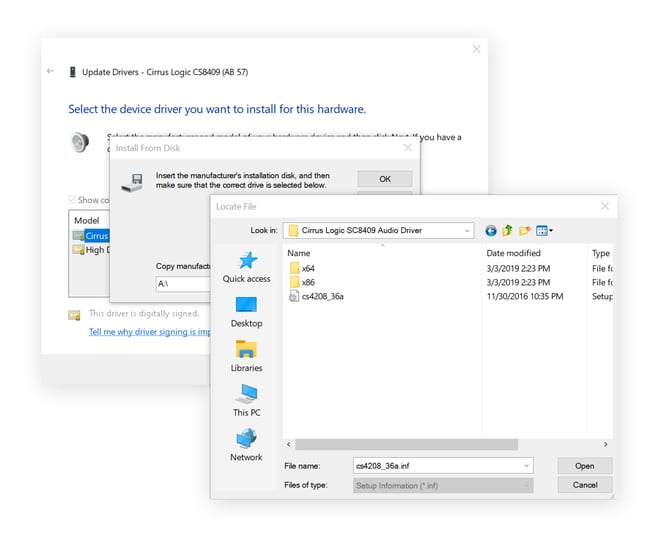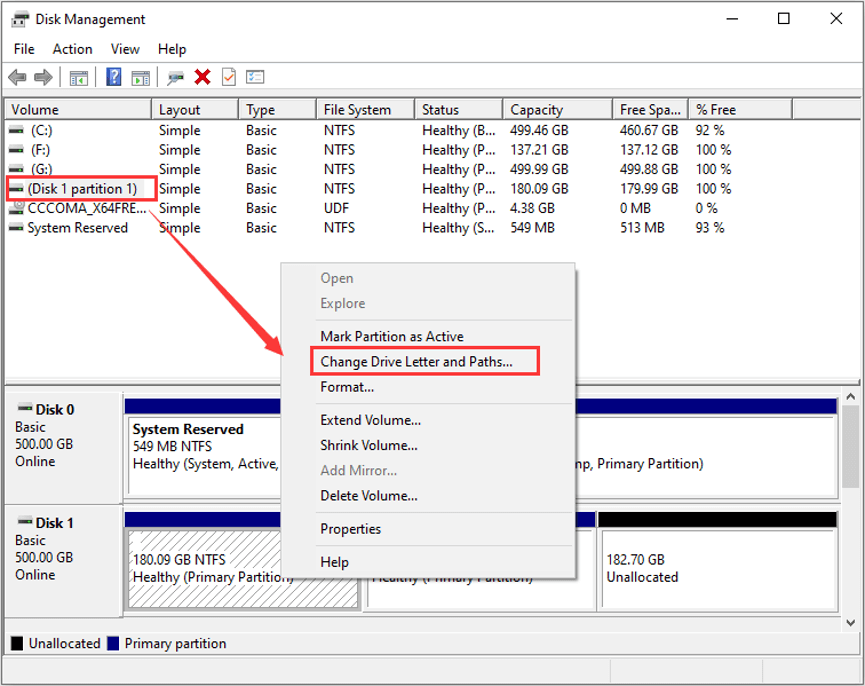- Windows Driver Foundation User Mode
- Windows Driver Foundation Missing Hiker
- Windows Driver Foundation Download
Click Windows, then Logs, then CBS. The logs have the date and time that a log was made, select the date and time that you ran the sfc /scannow scan. Locate your scan and copy it, then paste it in. While Windows Driver Foundation does not exactly restrict the functionalities of the CPU, it certainly drains the battery and might cause freezing of the system at times, especially if the usage shoots up to 100%. This post from MiniTool will show you how to fix the “Windows Driver Foundation high CPU” issue. As you can see from the picture, the second culprit for high disk usage is nvidia container, to remove this issue, uninstall geforce experience but I am still looking for a solution for windows driver foundation. Edit: Yet again unknow stuttering while playing a game, and again wudfhost shits all over the disk. Windows Driver Foundation (WDF) is a set of Microsoft tools that aid in the creation of high-quality, realiable drivers for Windows 2000 and later versions of Windows. The primary tools that comprise WDF are the Kernel Mode Driver Framework (KMDF) and User Mode Driver Framework (UMDF). These tool kits provide a new, object-oriented, programming model for Windows driver development.
Windows Driver Foundation - User-mode Driver Framework - Windows 10 Service
Creates and manages user-mode driver processes. This service cannot be stopped.
This service also exists in Windows 7, 8 and Vista.
Startup Type
| Windows 10 version | Home | Pro | Education | Enterprise |
|---|---|---|---|---|
| 1507 | Manual | Manual | Manual | Manual |
| 1511 | Manual | Manual | Manual | Manual |
| 1607 | Manual | Manual | Manual | Manual |
| 1703 | Manual | Manual | Manual | Manual |
| 1709 | not exists | not exists | not exists | not exists |
| 1803 | not exists | not exists | not exists | not exists |
| 1809 | not exists | not exists | not exists | not exists |
| 1903 | not exists | not exists | not exists | not exists |
| 1909 | not exists | not exists | not exists | not exists |
| 2004 | not exists | not exists | not exists | not exists |
| 20H2 | not exists | not exists | not exists | not exists |
Default Properties
| Display name: | Windows Driver Foundation - User-mode Driver Framework |
| Service name: | wudfsvc |
| Type: | own |
| Path: | %WinDir%system32svchost.exe -k LocalSystemNetworkRestricted |
| File: | %WinDir%System32WUDFSvc.dll |
| Error control: | normal |
| Group: | PlugPlay |
| Object: | LocalSystem |
| Privileges: |
|
Default Behavior
The Windows Driver Foundation - User-mode Driver Framework service is running as LocalSystem in its own process of svchost.exe. No other services run in the same process. If Windows Driver Foundation - User-mode Driver Framework fails to start, the error is logged. Windows 10 startup proceeds, but a message box is displayed informing you that the wudfsvc service has failed to start.
Dependencies
Windows Driver Foundation - User-mode Driver Framework is unable to start, if the User Mode Driver Frameworks Platform Driver service is stopped or disabled.
If Windows Driver Foundation - User-mode Driver Framework is stopped, the following services cannot start:
Restore Default Startup Type for Windows Driver Foundation - User-mode Driver Framework
Windows Driver Foundation User Mode
Automated Restore
1. Select your Windows 10 edition and release, and then click on the Download button below.
2. Save the RestoreWindowsDriverFoundationUsermodeDriverFrameworkWindows10.bat file to any folder on your hard drive.

3. Right-click the downloaded batch file and select Run as administrator.

4. Restart the computer to save changes.
Note. Make sure that the WUDFSvc.dll file exists in the %WinDir%System32 folder. If this file is missing you can try to restore it from your Windows 10 installation media.
‘There is something beautiful about a blank canvas, the nothingness of the beginning that is so simple and breathtakingly pure.’
Piper Payne
Gone are the days when users would have to go through a lengthy process just to install Windows. After all, Microsoft has made the steps easier and simpler. On the other hand, it is still possible for you to encounter driver-related problems that may prevent you from completing the installation process.
So, what should you do when a media driver is missing on Windows 10? You might notice that the USB installation media is booting properly. However, the installation process is not successful due to a missing USB hub driver. There are various reasons why this error occurs, and here are some of them:
- Corrupted ISO media or DVD drive
- Malfunctioning USB drive or port
- Missing USB or DVD driver
- Unit uses Serial Advanced Technology Attachment (SATA) instead of Integrated Drive Electronics (IDE)
You don’t have to panic because we will teach you how to fix media driver missing error. Keep reading this article to learn the solutions that will help you get rid of this problem.
Solution 1: Meeting the requirements for Windows 10
Before you can even try fixing the issue, you have to ensure that your computer meets the requirements for Windows 10. Moreover, you should update your BIOS before you initiate a clean installation of the operating system. Listed below are the minimum system requirements for running Windows 10:
Windows Driver Foundation Missing Hiker
- RAM: 2GB for 64-bit or 1GB for 32-bit
- CPU: 1GHz or a faster processor or SoC
- HDD: 20GB for 64-bit OS or 16GB for 32-bit OS
- GPU: DirectX 9 or a later version with WDDM 1.0 driver
- Display: At least 800×600
If you want to have a seamless workflow, it would be best to have at least 2GB of RAM or 3GB for the 64-bit version. This will also provide you with a better processing power.
Solution 2: Trying a different USB port midway
Some users have found a way to work around this problem, and the solution is quite easy. When they initiated a clean installation of Windows 10, they used the method for fixing the same error in Windows 7 and Windows 8. Basically, all you have to do is remove the USB installation drive midway through the process, then try using another port. Here are the steps:
- Download the Media Creation Tool and create a USB installation drive.
- Boot your computer from the drive.
- Wait until all the installation files have loaded.
- Select your preferences, then click Install Now.
- Once you see the error message, click Cancel.
- Remove the USB drive and plug it into a different port.
- Click Install Now. The installation process should continue from here.
The aforementioned solution should work for you. However, it is worth noting that this method was mostly for users who had previously installed Windows 10 on their unit.
Solution 3: Using a different USB flash drive

For some strange reason, some USB flash drives, albeit compatible, won’t load all the installation files. In this case, it would be advisable to install Media Creation Tool on a different USB stick.

It is also worth noting that if you have never installed Windows 10 on the computer in question, it is possible that the certain issues with the USB 3.0 port would prevent the BIOS from loading the installation files. As such, you should only use the USB 2.0 ports when installing Windows 10. You can easily identify a USB 3.0 port by the blue strip inside it.
Solution 4: Changing the SATA to IDE
It is possible that the SATA mode is causing the problem. This error specifically occurs when the machine is using IDE, but the installation media boots with SATA. With that said, changing the SATA to IDE in BIOS or UEFI can resolve the issue. Simply follow the instructions below:
- Boot into BIOS.
- Select any of the following: Advanced, Storage Configuration, Drive Configuration, or IDE Configuration.
- Go to SATA Mode. You can also go to Set SATA As or SATA Configuration.
- Change the option to IDE, Compatible, or ATA.
- Save the changes you’ve just made.
- Try installing Windows 10 again and check if the error has been resolved.
Resolve PC Issues with Driver Updater
Unstable PC performance is often caused by outdated or corrupt drivers. Auslogics Driver Updater diagnoses driver issues and lets you update old drivers all at once or one at a time to get your PC running smoother
Solution 5: Disabling/enabling certain options in BIOS
Some users have tried working around the error by disabling certain options in BIOS. If you are trying to install a 64-bit version of Windows 10, you can boot into BIOS and try to disable Legacy USB and Legacy BIOS. Before you plug in the flash installation drive, make sure that you’ve enabled the AHCI.
In some configurations, users can set the USB option solely to USB 3.0. On the other hand, we recommend setting it to Auto if such option is available in the BIOS menu.
Solution 6: Opting for Rufus
If you’ve tried the methods above and the error persists, you may want to opt for Rufus instead of using the Media Creation Tool. Provided by Microsoft, this program typically works just fine. However, we recommend starting from scratch using the alternative tool if you’ve exhausted all other solutions. Moreover, if you’ve been installing Windows 10 from a USB flash drive, we suggest downloading the ISO file and burning it to a DVD instead.
Once you’ve successfully installed Windows 10, we advise you to regularly update your drivers, using Auslogics Driver Updater. As the error message suggests, the problem occurred due to a missing media driver. As such, you should ensure that you have the latest manufacturer-recommended versions of your drivers. This prevents similar issues from happening and even improves your computer’s speed and performance.
Windows Driver Foundation Download
Do you have clarifications or suggestions?
Let us know in the comments below!
